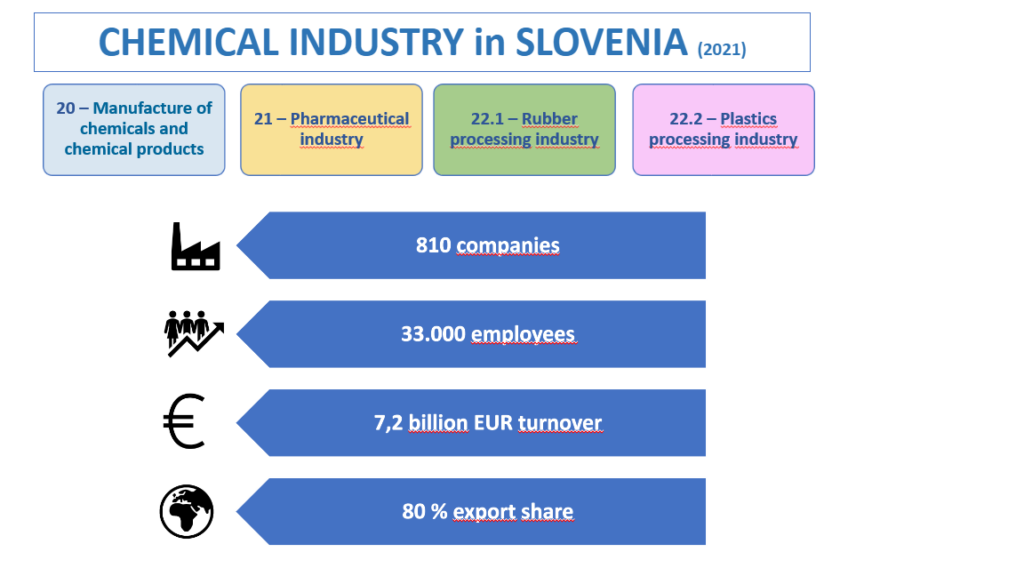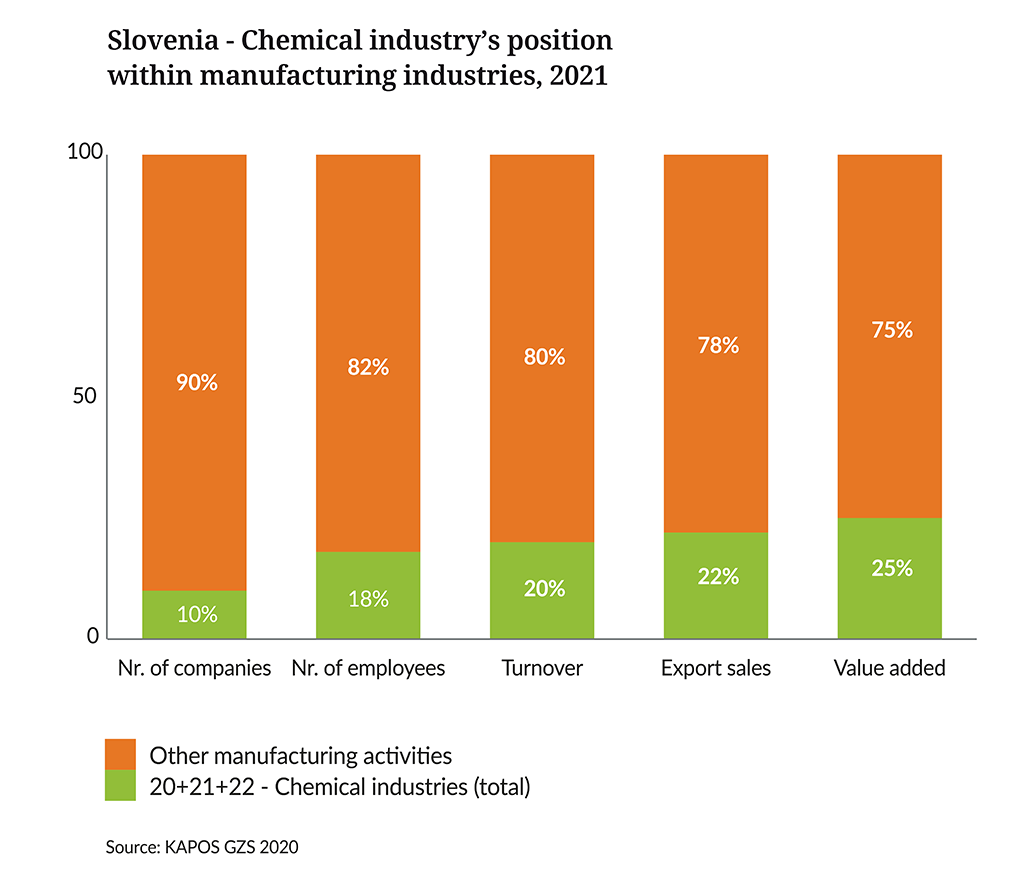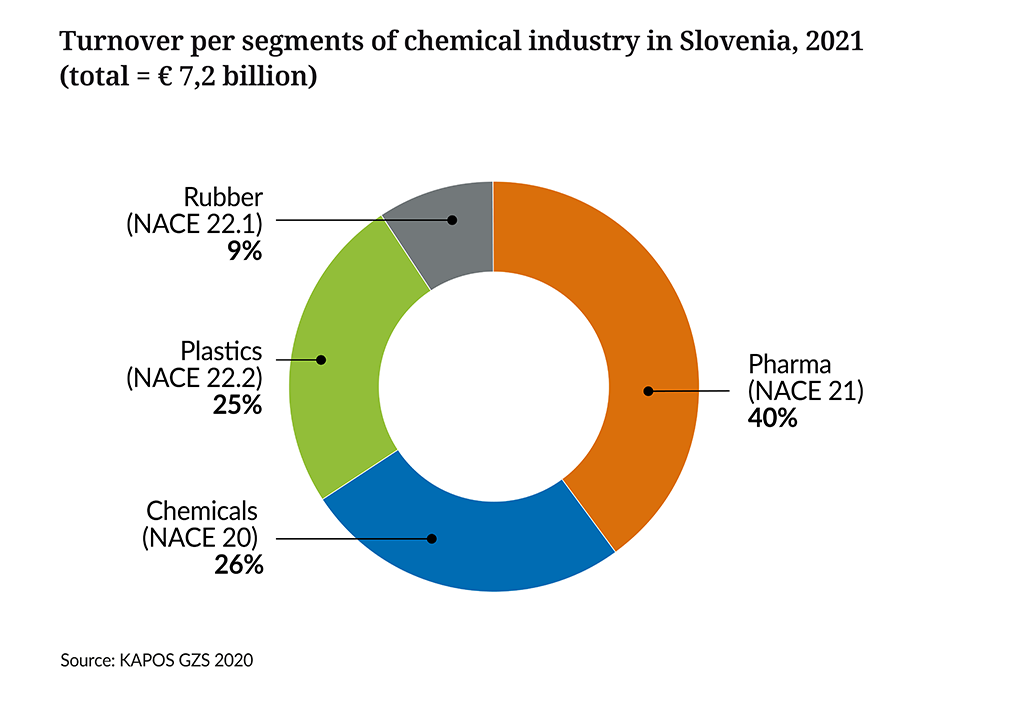Slovenia
Key facts
Turnover
€7.2 billion
Direct employees
33,000
Numbe rof companies
810
National contact
Association of Chemical Industries of Slovenia (at Chamber of Commerce and Industry of Slovenia – GZS)

Darja Bostjančič
Director
zki@gzs.si
CHEMICAL INDUSTRY SNAPSHOT

One of the main pillars of the economy
The chemical industry is one of the main pillars of the Slovenian economy.
It is the leading manufacturing sector in Slovenia: in total it generates 25 % of the value added of the entire Slovenian manufacturing industry. It is the leading manufacturing industry in terms of productivity as well: its employees (representing 18% of employees in all manufacturing industries in Slovenia) create the highest value added per employee.
The industry has a long tradition, it has well educated, qualified, skilled and internationally savvy labour force and is highly export oriented.
And among the leading employers
Companies producing chemicals and chemical products, pharmaceutical raw materials and preparations and rubber and plastic products together employed nearly 33,000 people. Labour force is well educated, skilled, qualified and internationally savvy.

Pharmaceuticals dominate in turnover
There are 810 chemical industry companies (96% of them SMEs[1]). The largest, though very few in number, are pharmaceuticals manufacturers, which account for 40% of chemical industry turnover.
[1] size defined according to the Slovenian Companies Act
Automotive is also an important customer
Overall, nearly two-thirds of companies are involved in plastic processing. Many of these supply the automotive industry, provide plastic products for construction purposes or advanced plastic packaging products for industrial and consumer use.
The traditional chemical industry main products include among other coatings and paints, adhesives and sealants, pigments, man-made fibres, some inorganic basic chemicals, some types of consumer chemical products (e.g. cosmetic products, detergents).
The rubber processing industry produces tyres for different types of vehicles, conveyor belts, seals and rubber profiles, environmental protection and rescue products.

Geared up to export
The chemical industry is largely export-oriented: export sales represent 80% of total sales by value.
96% of pharmaceuticals, 80% of rubber products, 74% of classic chemical products and 60% of plastics are exported, predominantly to Western European countries.
This shows the international competitiveness of the Slovenian industry. It is a reliable partner, known for its expertise and flexibility. But it also significantly contributes to keeping the country in the main global economic trends and networks.
HOW ARE WE DOING?
Strengths
- Well-educated, qualified, skilled and internationally-savvy workforce
- Established position in international networks (in supply chains, ownership relations etc.)
- Universities and R&D institutions offer significant support to the chemical industry
- An extensive transport network and a convenient deep-sea port in the country
- Slovenia’s geostrategic position in Central Europe between the Alps and the Mediterranean
- A gateway between Western and South Eastern Europe, with good knowledge of Balkan countries’ culture and markets